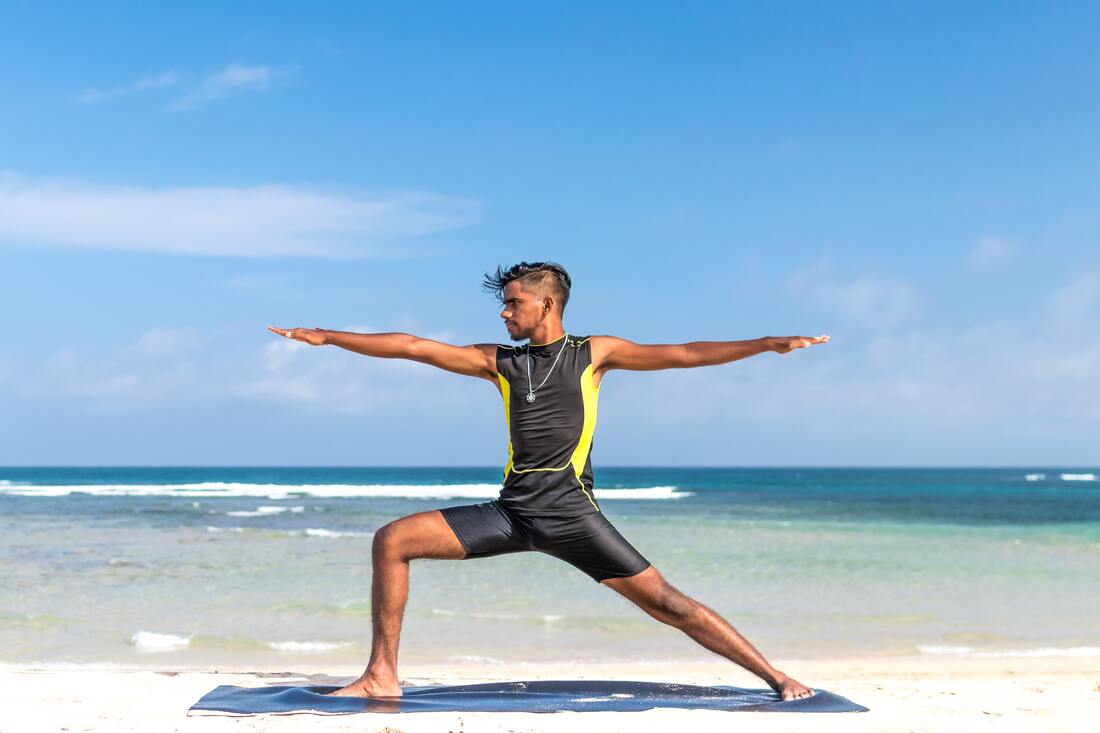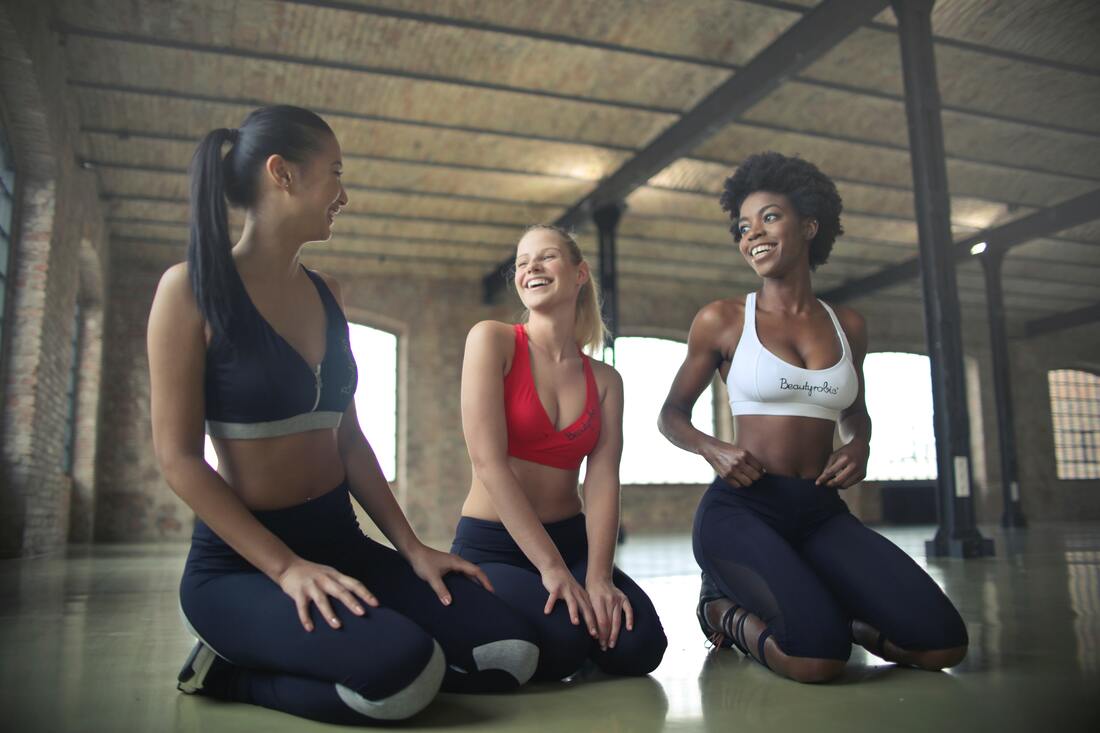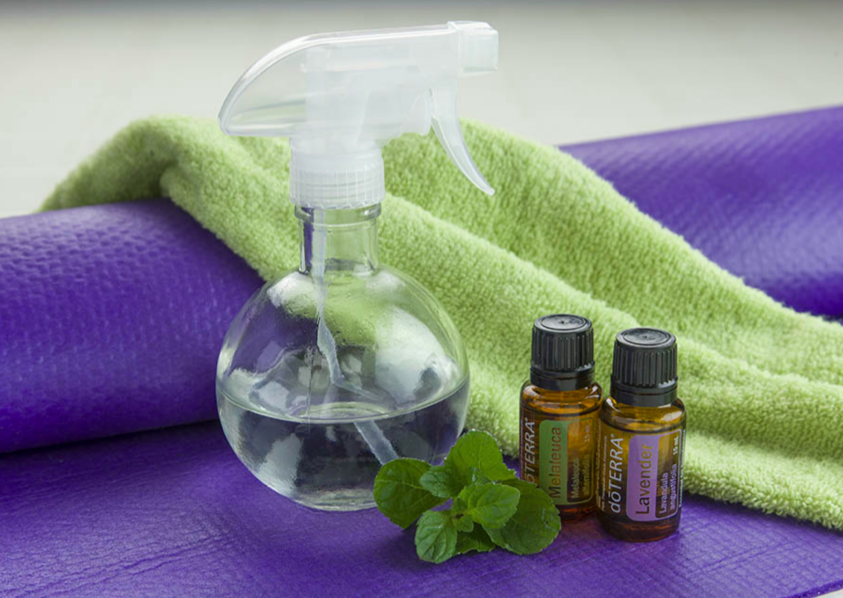|
Mark Whitwell lives in the United States and New Zealand. He is resident teacher at Sacred Movement Center for Yoga and Healing in Los Angeles and has spent a lifetime studying the traditions to bring them alive and make them useful
|
Try using essential oils in your yoga practice - use this guide to help you feel confident doing so.
|
|
You don’t have to be an expert in yoga to enjoy the beautiful benefits of the new doTERRA Yoga Collection. Created with the help of Elena Brower, (is the author of Art of Attention, a renowned yoga workbook, now translated into five languages.) the collection consists of three 5 mL blends called Arise, Anchor, and Align. With these blends, the beginner as well as the seasoned yogi will enjoy using each distinct blend in their practice. Each blend is carefully designed with a unique combination of essential oils to provide different scents and benefits.
Essential Oils and Yoga
Add a few drops of your favourite doTERRA Yoga Collection blend to a diffuser or your chakra points and take your physical, mental, and spiritual health to the next level. doTERRA Arise Enlightening Blend At moments when discouragement and opposition affect your ability to reach your goals, doTERRA Arise Enlightening Blend can provide a joyful, encouraging aroma to uplift and help you rise up. Featuring Grapefruit, Lemon, Osmanthus, and Siberian Fir essential oils in a base of Fractionated Coconut Oil, Arise’s fresh scent is both happy and inspiring and will help you continue to reach higher. Our Favourite Uses 1. When you wake up, apply two to three drops of Arise on your heart while practicing daily affirmations to help you rise up and face the day with clarity and joy. 2. When practicing challenging yoga poses, apply Arise to help yourself achieve the next level. 3. Apply several drops to diffusing jewelry to remind you of your goals throughout the day. Ideal Yoga Poses with Arise Standing Arms high and standing side stretch Half Moon doTERRA Anchor Steadying Blend
When uncertainty affects your world, doTERRA Anchor Steadying Blend can help to restore balance and stillness in your life. Featuring Lavender, Cedarwood, Sandalwood, Cinnamon, Frankincense, Black Pepper, and Patchouli essential oils in a base of Fractionated Coconut oil, Anchor’s aroma is earthy, woody, and rich helping you feel rooted and grounded. Our Favourite Uses
Ideal Yoga Poses with Anchor Seated Meditation Seated Twist Bhu Mudra (one hand on the heart, the other on the Earth) doTERRA Align Centering Blend
It’s easy to feel disconnected and out of control in the busyness of everyday life. Combining the properties of the doTERRA Align Centering Blend with certain yoga poses can help align and create a sense of peace and purpose. Align is made with a unique blend of oils such as Peppermint, Basil, Geranium, and Jasmine Flower to create a fresh, green, and herbal scent. Our Favourite Uses
Ideal Yoga Poses with Align Warrior II Triangle Gate pose There are many other essential oils that can help you aside from the collection. For example, applying doTERRA Balance® can help ground you in the present during your practice, while Wild Orange and Peppermint placed on your temples or diffused into the room can energize and invigorate your senses to help you keep moving. Whatever oils you choose to use, we recommend using no more than three oils during any one practice to prevent sensory overload. Benefits of Yoga
When it comes to exercise, cardio and resistance training get most of the attention. But a modality that was developed over 5,000 years ago offers many of the same benefits, and then some. If the goal of your exercise program is lifelong health and vitality—of the body and mind—then you should definitely consider making yoga a part of your plan. The Body
One of the primary reasons people stop, or never really start, an exercise program is because physical exertion can hurt, acutely and long-term. This is due both to unavoidable physiological processes (i.e., delayed onset muscle soreness (DOMS)) and because the modern lifestyle promotes sedentary behaviors that make us stiff and immobile. Yoga is one of the best ways to address these issues. One study found that yoga was an effective means to expedite exercise recovery, decrease the intensity of DOMS, and improve post-exercise flexibility. Adults who spend most of their days sitting experience a number of negative side effects. Not only are many adults lacking the required flexibility and mobility to safely perform various physical activities (especially hip-hinged movements, such as squats and deadlifts), but also chronic lower back and neck pain are becoming progressively more common. Yoga can help open up those hips so you can squat like a toddler without discomfort or muscular inhibition, and systematic reviews have confirmed that yoga is one of the single most potent methods of reducing pain and functional disability of the spine. And don’t forget that cardio. While the methodology is totally different than logging miles on the treadmill, there is evidence that the positive physiological adaptations of regular yoga may be similar to that of running. A systematic review found that yoga was just as effective as more traditional means of cardiovascular exercise in lowering risk for cardiovascular disease and metabolic syndrome, and in improving various standard metrics of cardiorespiratory health. A holistic exercise plan simply is not complete without some variation of yoga. The Mind
The benefits of yoga are not limited to the body; in fact, it’s ability to positively influence the mind is probably its most studied characteristic. Research has shown that regular yoga practice can increase blood flow to the brain, improve executive functioning and working memory capabilities, and protect against age related cognitive decline. One recently published study found that regular yoga practice actually influences brain structure, as regular yoga practitioners were found to have greater brain cortical thickness than agematched healthy non-practitioners. Previous research has associated cortical thickness with decreases in cognitive and executive functioning losses that come with aging. It is believed that the mechanism behind these effects is quite simple: extreme focus is an integral part of yoga practice, and the brain is much like a muscle in the sense that the more you challenge it, the more powerful and resilient it becomes. If it is mood-enhancing benefits you are looking for, lifting your hands to the sky in Utkatasana (“Chair Pose”) does the same thing for your spirit. Researchers have found that as little as eight weeks of regular yoga practice can have dramatic positive influence on levels of anxiety and self-perception. Body or mind, yoga promotes health and wellness like few other activities can. |
DIY YOGA MAT SPRAY
Whether you are an expert yogi, or just getting started, a good yoga mat spray is a must. Ingredients 3⁄4 cup distilled water 1⁄4 cup alcohol-free witch hazel or white vinegar 5 drops Lavender oil 3 drops Melaleuca (Tea Tree) oil Glass spray bottle Note: Not all yoga mats are treated the same. Using essential oils may ruin some yoga mats. Spray a test patch on a small part of your mat first to make sure the cleanser doesn't adversely affect it . Instructions 1. Combine all ingredients in glass spray bottle. 2. Shake until combined. 3. To use, spray on mat and wipe dry with a towel. Meditation
|











